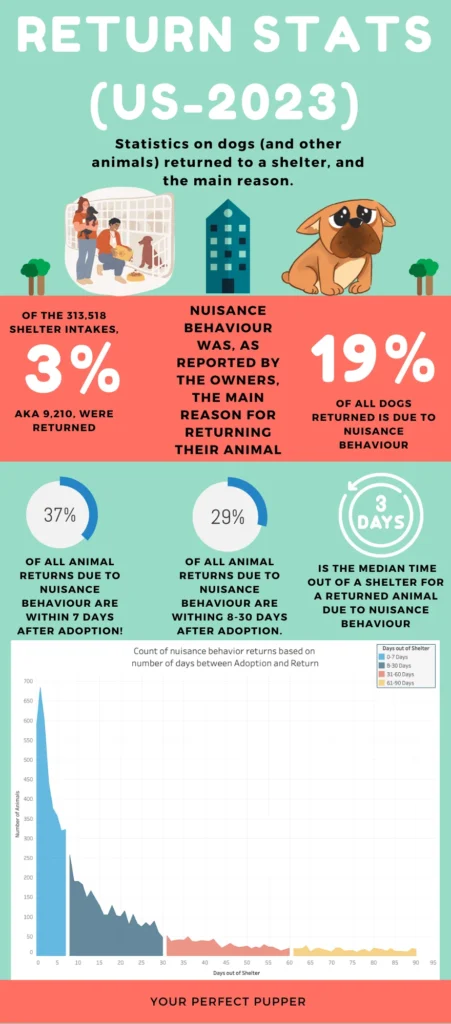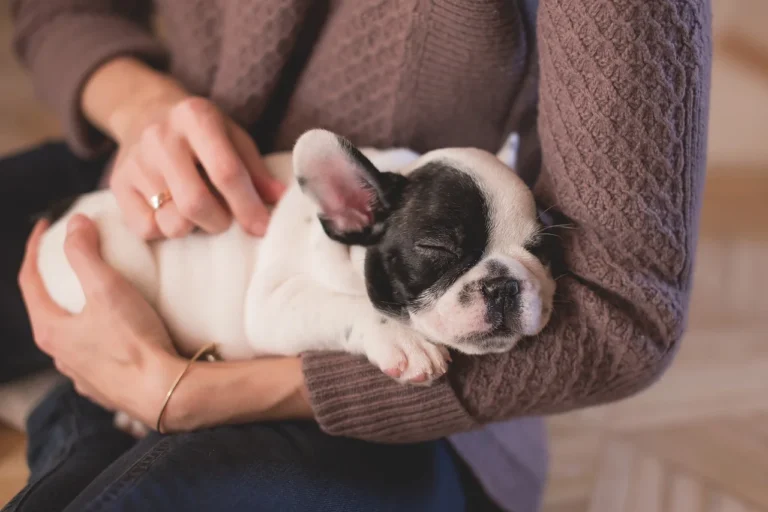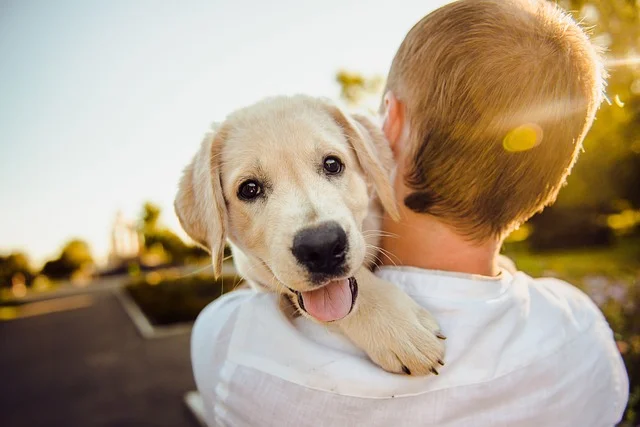The 3-3-3 Rule of Adopting a Shelter Dog
Adopting a shelter dog is exciting but it can also feel a bit overwhelming. You might wonder, “How can I help them settle in?” That’s where the ‘3-3-3 rule’ comes into play.
It’s a simple way to understand their adjustment period and set realistic expectations: three days to decompress, three weeks to learn routines, and three months to feel fully comfortable.
Trust me, this very quick guide can be a lifesaver (for you and your new doggo). Stick around, and you’ll learn how to make this transition smooth and stress-free.
Table of Contents
Disclaimer: This post contains affiliate links, which means I may earn a small commission if you make a purchase through these links at no extra cost to you. I only recommend products/services that I genuinely believe in and think will be helpful for my readers. Your support helps keep this blog running—thank you!
Importance of Adjustment
So, after your dilemma of choosing between a puppy or a shelter dog, you have chosen the latter. Awesome! — I’ve had shelter dogs and it feels great giving them a new home 😊.
But, this decision is only the beginning of your journey. If you are bringing home a shelter dog, it is so important to understand that they need time.
These dogs went from a known environment, whether loving or abusive, to a shelter, and now they are in your environment.
People seem to totally understand that a puppy needs time to adjust when taking him home. After all, he was taken away from his mum, litter mates, and trusted environment.
However, people seem to forget that a shelter dog has left a known environment (at least!) TWICE — once after being removed from his known owners/environment and once after leaving the shelter.
Just because an environment is a stressful one, that doesn’t mean it is easy to leave it once you know it. Why wouldn’t you give your shelter dog the same grace as you would a puppy?!
Being in a shelter is stressful enough, but then going into an environment where everything is different yet again will cause additional stress.
Shelter Dog Return Stats
In 2023, HASS (Humane Animal Support Services) examined the reasons shelter animals were returned in the U.S.
Across all types of animals, the top two reasons for returning an adopted pet were:
- Owner or household preferences — often noted as “not a good fit” or simply “unspecified.”
- Nuisance behaviour — actions the adopter found inconvenient or undesirable.
Out of 313,518 adoptions included in the study, nearly 3% were returned — that’s 9,210 animals.
“Nuisance behaviour” refers to things like barking, scratching furniture, or any behaviour an adopter finds bothersome — even if it’s typical or manageable with time.
Here’s what the data showed about returns due to nuisance behaviour:
The study also showed when pets are returned for nuisance behaviour:

* Note: you are welcome to use this infographic on your website/blog, however you must attribute Your Perfect Pupper and link to this blog post! Please, also attribute HASS as the information comes from their website.
Now, I get it — you adopt a dog from a shelter and hope for instant connection, gratitude, and a perfectly behaved pet. But that’s not how it works.
So…what does work?
There are plenty of ways to help your new shelter pupper settle in, but when it comes to expectations and adjustment, the 3-3-3 Rule is a solid guide.
It breaks down your dog’s typical adjustment journey into three stages:
- First 3 days.
- Next 3 weeks.
- 3 Months onwards.
Let’s take a closer look at what each phase really means — and how you can support your new companion through each one, so you’re not part of that all-too-common ‘returned-in-3-days’ statistic.

The 3-3-3 Rule Explained
The well-known 3-3-3 rule breaks the adjustment period down into manageable stages: the first 3 days, the next 3 weeks, and from 3 months onwards.
Each phase represents a milestone where your new companion will begin to show signs of adapting to his home.
These ‘rules’ help you with a set timeline, although, keep in mind you are dealing with living beings. Just like people, animals don’t follow the same exact timeline.
Remember, this is just a general guide, so don’t be discouraged if things might take a little longer 😉.
When I adopted my 2 German Shepherds, I had one major advantage: I adopted 2 brothers who spent their whole lives together, by themselves in an outside kennel (they were 4 when I adopted them).
The ‘leader’ (so to speak) was a very happy-go-lucky dog and he bonded with me very quickly. It took a little longer for his brother to be comfortable and open up. However, his brother trusted me, he trusted his brother and, therefore, he quickly trusted me as well.
Their adjustment period went quicker than the 3-3-3-period.
First 3 Days: Decompression
Imagine stepping into a completely foreign world — and not for the first time. You went from your trusted environment (whether loving or not) to a shelter. Then you go from a shelter to a new home (maybe even your 2nd or 3rd!). This will be pretty overwhelming, right?!
That’s exactly how many shelter dogs feel…overwhelmed and scared. Some dogs might be extra shy and hide away; others might become a velcro-dog, clinging to you everywhere you go — shelter dogs often develop separation anxiety.

Some dogs won’t eat, others may bark or pace excessively from stress. It’s important to realise that in most cases, this is not the dog’s normal behaviour.
During this stage, it is crucial that you don’t ‘baby’ or coddle the dog — this can either make him/her more scared or it can lead to you accepting behaviours that you would not accept otherwise, such as being on the sofa.
To give you an example: my parents adopted a Pomeranian/Toy Keeshond. He had a rocky past and had been returned to the shelter before.
When they got him, they babied him and, e.g., constantly fed him something whenever they ate something.
Now, he won’t stop begging whenever there is food! He will pace and whine continuously until they give him something (a few times throughout the meal), and they are done eating.
Because they felt sorry for him, they just let him do whatever, which has led to a number of issues, begging for food is one of them.
How Can You Help?
Next 3 Weeks: Settling In
By this point, your dog is starting to feel more comfortable and confident and should start exploring his surroundings. This is the time his real personality will begin to shine…for better or worse 😅.

Like a toddler, this is the time your dog will start testing your freshly set boundaries. This can be anything from being on the sofa to chewing on your shoes. This is normal, they are trying to figure out your rules and if, just maaaaaybe, they can get you to reconsider — I mean, one might never know 😜.
Don’t get angry when this happens but stand firm and ensure you keep showing your boundaries. This ‘boundary testing’ is why it is so important you do not want to coddle your dog — if you let him on the sofa because ‘you feel bad for him’ but actually you kinda don’t want him on the sofa, then you are already setting both of you up for potential failure during this stage.
How Can You Help?
From 3 Months Onwards: Trust and Routine
Now, this is the time that the magic happens! Around the 3-month mark, most dogs will begin to fully integrate into your family, your routines, and your environment.
This is also the time that your dog’s true personality will start showing…that also means that any unwanted behaviours can pop up that you might have to work on — behaviours that he did not pick up at your place but at his previous owner(s).
Unwanted behaviour can be many things, such as jumping up at people or excessive barking. However, in most cases, you don’t need expensive dog trainers.
In fact, you can teach your new pupper with force-free methods from anywhere in the world, and from the comfort of your own home. How? Simple: enroll in Adrienne Farricelli’s Brain Training for Dogs course! Adrienne is a CPDT-KA certified dog trainer from the US who ‘gets it’.
Her course is easy to follow, you get full support, and loads of extras.

Another thing to keep in mind: many shelter dogs develop separation anxiety, and that can show itself at any stage! I would suggest getting help from a dog trainer in person rather that trying to tackle this yourself.
When your dog shows unwanted behaviours or suffers from separation anxiety, don’t feel like you have failed!
Do your due diligence and take Adrienne’s course or look for a reliable dog trainer to help you and your pupper. There is no shame in needing help.
You have laid the foundations of trust, and the creation of a true bond with your dog, and now is the time to keep the momentum going. By this time, if you have followed the guidelines, your dog should be comfortable and feel secure with you.
These deeper signs of trust could be as simple as him snuggling up with you (on his own accord!) or the classic waggy tail, happy-go-lucky dog when you come home.

Your dog is now set into his routine, so he might now come to expect his dinner at his usual time 😜.
Just remember that your work is not yet done, though. You need to keep reinforcing good behaviours and socialise him in a safe, and controlled way. If you keep up the work, your dog will truly start to feel like he belongs and you start to create that unbreakable bond.

* Note: you are welcome to use this infographic on your website/blog, however you must attribute Your Perfect Pupper and link to this blog post!
Final Thoughts
Taking a dog out of a shelter is a good feeling — One that I know all too well! However, one thing people tend to forget is that, just as with puppies, shelter dogs need time to adjust.
It can be daunting to try and remember it all, so make a note, print out the infographic above, whatever you need as a reminder.
Use the 3-3-3 rule and help your dog settle in to his new home.
Did you know about the 3-3-3 rule already? Drop your comments down below!
Remember to pin an image to your favourite pet board!



*Please note: some of the images in this blog post are AI-generated with prompts created by me. These images do not serve an educational purpose.







Super helpful post thank you, I never thought how even though the dog can be in a better environment they were actually used to the old – maybe not so good environment.
Hi Kelly, I am glad you found the article helpful 🙂